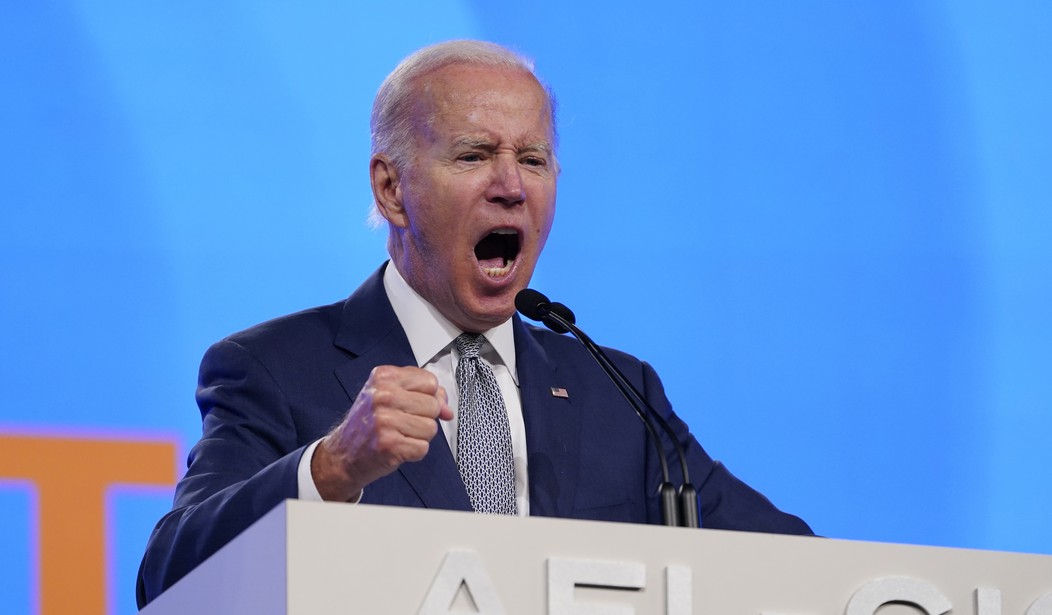Are unions on the rebound in America? A recent Gallup poll shows that 71% of Americans now approve of labor unions. The percentage of approval before the pandemic was 64%. Contrast that with the reality that only 1 in 10 workers on U.S. payrolls are union members, half the level seen four decades ago. Labor union participation is half the level of four decades ago.
The latest approval figure comes amid a burst of 2022 union victories across the country, with high-profile successes at major American corporations such as Amazon and Starbucks. The National Labor Relations Board reported a 57% increase in union election petitions filed during the first six months of fiscal year 2021.
Support for labor unions was highest in the 1950s, when three in four Americans said they approved. Support only dipped below the 50% mark once, in 2009, but has improved in the 13 years since and now sits at a level last seen nearly 60 years ago.
Labor unions certainly have a friend in the White House. Joe Biden kowtows to labor unions every chance he gets. Unionization of some companies has been successful lately, including even with the Congressional staffers who formed the Congressional Workers Union. Is it an increase in younger, progressive workers or is it a result of mass job loss during the pandemic?
Liz Shuler, president of the AFL-CIO labor federation, wants to add one million people to union ranks over the next 10 years.
“We would say that unions are a pillar of a healthy democracy, and we see it around the world that unions have always been sort of bedrock to the foundation of a healthy economy and a healthy society,” Ms. Shuler told reporters.
One thing that’s clear: Some unionization drives are succeeding and emboldening many in the young generation of workers.
Ms. Shuler acknowledges ways that the labor movement can improve from within, by being “more modern and dynamic and inclusive.” She wants to see unions expand their relevance, whether by collaborating to grow their ranks or having answers to challenges like the on-the-job frustration known as “quiet quitting.”
What is the first thing you think of when you think of labor unions? For me, it ‘s corruption and political activism for Democrats. Friday the AFL-CIO announced it launched its largest ever organizing drive to get out the vote in November for the mid-term elections. The goal is to connect more than 100,000 volunteers to nearly 8 million voters before the election day. The labor union represents 12.5 million workers. The plan is for volunteers to meet with workers in person and send text messages, make phone calls, and send digital messages to garner support for pro-union candidates.
That’s union dues money at work, whether the member is a Democrat or a Republican voter. Labor union donations to campaigns only go to one party’s candidates. The hope is that their efforts will help provide a wave of Democrat victories in November. The states that the AFL-CIO will concentrate on are the usual suspects. Arizona, Georgia, Michigan, Minnesota, Nevada, North Carolina, Ohio, Pennsylvania, and Wisconsin are all on the list. The union organizers think that in-person meetings are a better use of time than to buy television ads or other ways of communicating with voters.
“This mobilization’s focus on personal connections to engage working people on issues that have a real impact on our families and communities will cut through the political noise to make a critical difference locally and nationally this November and beyond,” AFL-CIO President Liz Shuler said in a statement.
As part of its organizing drive, the labor federation will highlight voting rights, access to legal abortion and other key issues in addition to labor policies.
The mobilization could be a boon for Democrats, who are closely aligned with the AFL-CIO and other labor organizations and have long sought to win back blue-collar workers by touting their pro-union proposals. Those include the PRO Act, a bill to strengthen workers’ ability to organize, which passed the House but couldn’t win 60 votes in the Senate amid GOP opposition.
For all the chatter of a shrinking red wave in November, it seems like stories like this in favor of Democrat efforts to get out the vote produce a whiff of desperation. Democrats know that they are going to lose the House, it’s a question now of by how much. Will the focus of voters revolve around the overturning of Roe v Wade by the Supreme Court or will practical matters take preference? I think voter outrage will calm down some by November about abortion, but maybe more states will turn out as deep red Kansas did. I think as long as inflation is at a 40 year high and grocery prices are going up, as well as energy bills as winter approaches, it makes Republican victories more likely. I still feel pretty good about a good Democrat trouncing in the House and I remain optimistic that the Senate will swing back to a Republican majority, though it will probably be very close.
Let the labor unions spend their money. I feel for the Republican voting workers, though, who see their union dues going to Democrats. The only real solution to that dilemma is to find a non-union job.








Join the conversation as a VIP Member